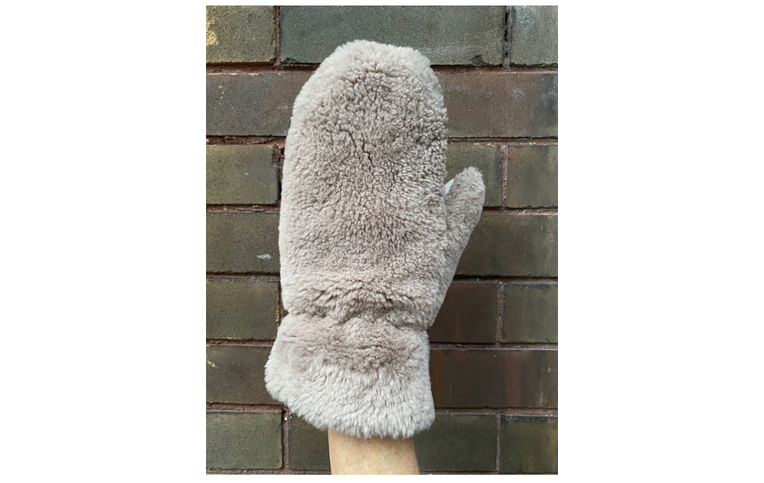Judgy Hands
From the Series: HandsOn: Touching the Digital Planet
From the Series: HandsOn: Touching the Digital Planet

In an era where extending one’s hand for a handshake went from polite to rude, the possibilities of impolite hands, and the judgments they imply, remain. While I often feel like making a judgment with my hand, I rarely do it. That changed this January when my husband returned from a ski trip where he had injured his shoulder so badly that he was unable to drive. The next morning, I dropped him at his office. I stopped in front of his building, not planning to stay, when a woman started berating me for parking in the wrong place, persisting even as my husband struggled to open the car door. As the sling holding his arm was visible, without even thinking, I gave her the finger, unfurling, without words, what I thought of her free lecture. However, as I was wearing puffy mittens on that frigid Canadian day, my gesture of judgment was likely lost on her.

Even in a country where politeness is valued, giving the finger, especially on the highway, is common enough. And of course, I thought of the famous example of Pierre Trudeau, former prime minister of Canada and father of our current prime minister, Justin Trudeau. His emphatic middle finger gesture through the window of his railcar in 1982, aimed at the protestors holding signs in Salmon Arm, British Columbia, became known as the “Trudeau Salute.”
The hand’s ability to rain down judgment without saying a word is also known in the Yemeni town, Zabid, where I conducted my field research not even a decade after Trudeau’s famous gesture occupied Canadian news media for weeks. Verbal discretion in Zabid was crucial, but a nonverbal flick of the fingers of the right hand under one’s chin was a method of judgment, although more diplomatic than giving the finger. I recall an older woman crisply noting that the head of a prominent family sent his son to acknowledge a death in their family, instead of coming himself. She followed this statement of fact with a dismissive flick of her fingers under her chin. The gesture itself was too cryptic to be considered gossip. The man’s absence from the mourning ceremony was merely noted verbally; the evaluation of the omission as an offense verging toward the unforgivable, was done with the fingers. Everyone present, even the anthropologist, absorbed the judgment made by a flick of the hand, without requiring further elaboration. But these gestures happened in women’s gatherings, which were never photographed or recorded.
Hands can “say more than their prayers,” as my mother used to say. They can also escape the implications of a verbal or written judgment. It seems similar to the difference between gossip in person and gossip digitally preserved in emails. However, while gestures might escape some consequences, when they are archived and circulated digitally, they become perhaps more unforgettable than words, as a palm to the forehead, recorded in a Zoom meeting, might live on for longer than intended. I offer, using pseudonyms, an example from one university Zoom meeting which itself was living longer that the 30-plus participants desired. When one participant, Joan, herself known for saying much more than her prayers, launched into yet another complaint about Zoom teaching, another participant, Sue, slapped her palm against her forehead. Sue was fortunately muted so the curse she appeared to be muttering was not audible to the other participants who too seemed attentive to the fact that the meeting was going over time. Sue’s slap to the forehead received much commentary in the small private messaging groups that had sprung up on people’s cellphones as we indulged in behavior that we try to discourage amongst our undergraduates. But a third colleague, Rita, forgetting that the Zoom chat was visible to all, thanked Sue, the forehead slapper, for capturing the “structure of feeling” of the whole meeting. At this point, Rita started receiving private texts about the public nature of her comments and a look of horror appeared on her face, followed by her blacking her screen. Sue’s hand gesture was immortalized (at least to the attending members) as it reached a far greater audience than it would have in an in-person meeting where it would have only been visible to those in direct eyesight of the gesturer. In this context, it caught the attention of almost everyone looking at the side-by-side gallery on their screen, with the possible exception of the speaker who had inspired the forehead slap, who continued her free lecture about the importance of being in person in the classroom after we had just been told that it was not possible due to COVID-19!
Judgy hand gestures exist in a curious space of effective ephemerality: giving someone the finger on the highway is likely the most common occurrence in Canada, a brief commentary on someone else’s driving, especially on unconventional lane changes. The angry judgment is exhibited in passing, but there is usually little follow up or consequence. The witnesses to Trudeau’s salute, as it were, did report his action, which inspired other protests along Trudeau’s train route at the time, and is enshrined as an icon, an unconventional embodiment of what many in Western Canada interpreted as the domination of Eastern Canadian politicians. The gesture, in short, was given many words, retrospectively. In Yemen, the effectiveness of the judgment of the hand was dependent on silent delivery and silent reception, ensuring deniability and falling short of declaring an open conflict between families. The palm-to-the-head gesture in the Zoom meeting was not only recorded by the meeting administrator, but entered into university lore, in part serving as a cautionary tale on the inadvertent immortalization of supposedly ephemeral nonverbal comportment. But my own indignant mobilization of the judgy hand was rendered completely ineffectual by the mitten disguising the nuances of the gesture. The finger in the puffy mitten cannot speak!